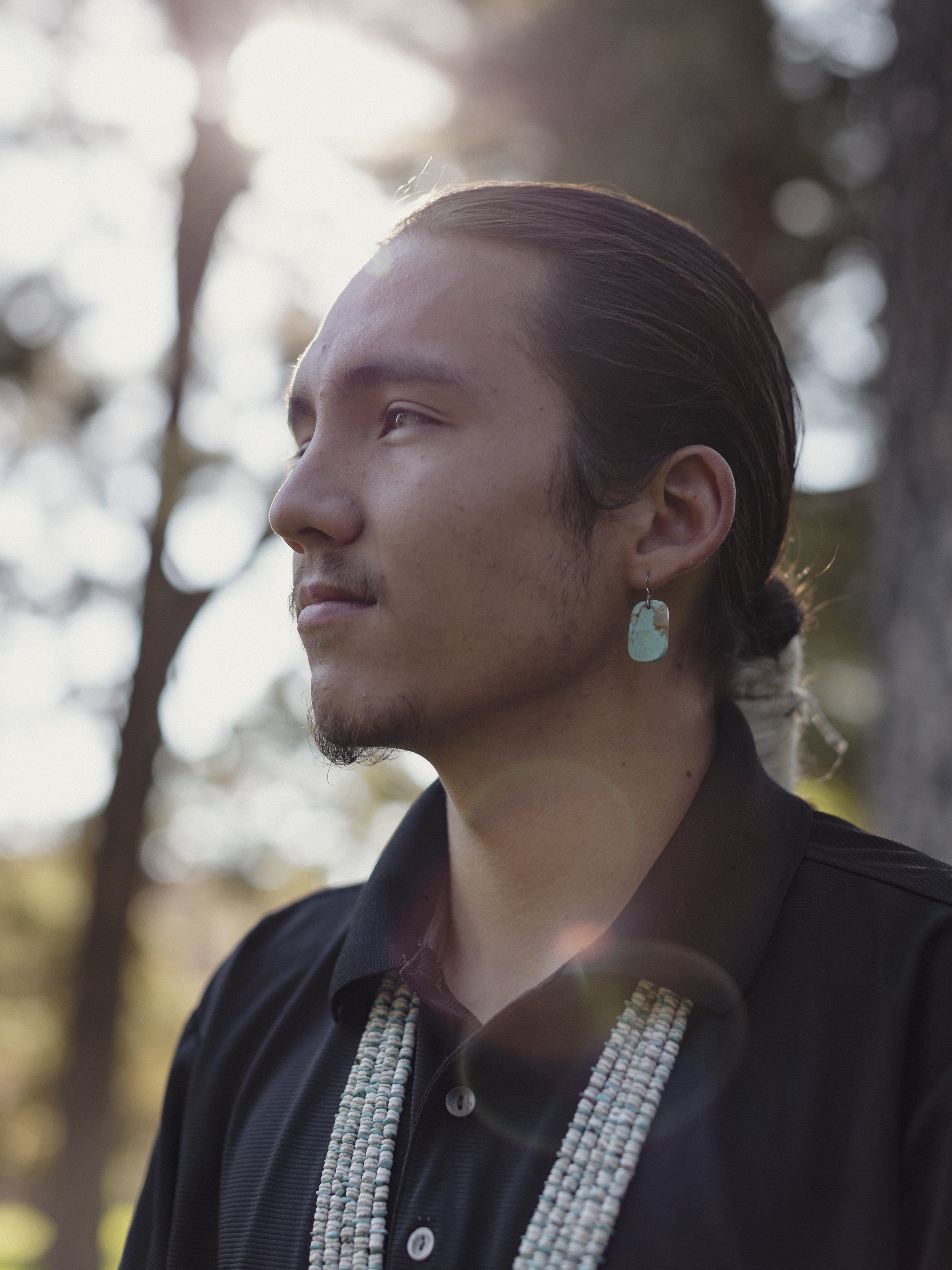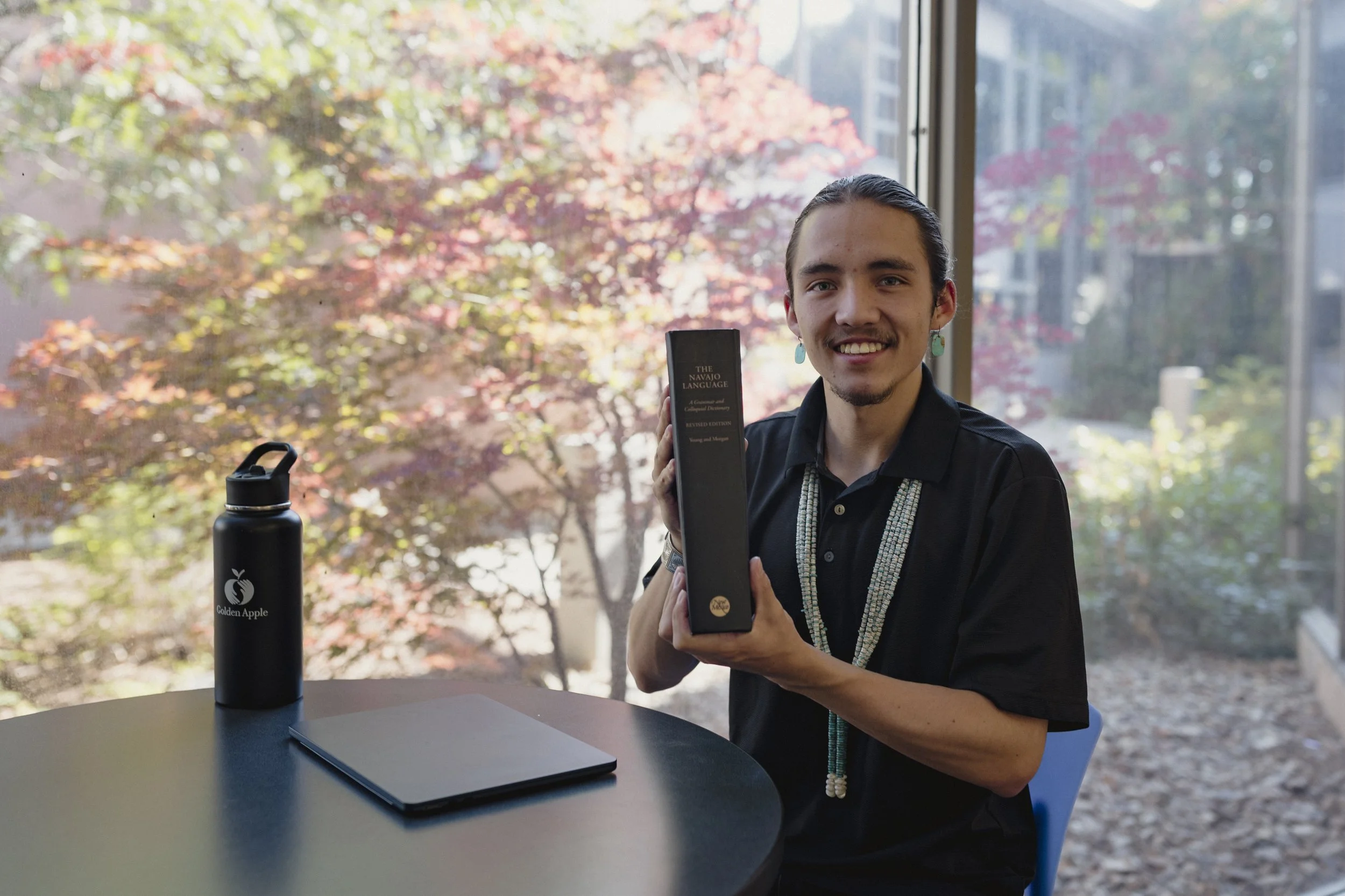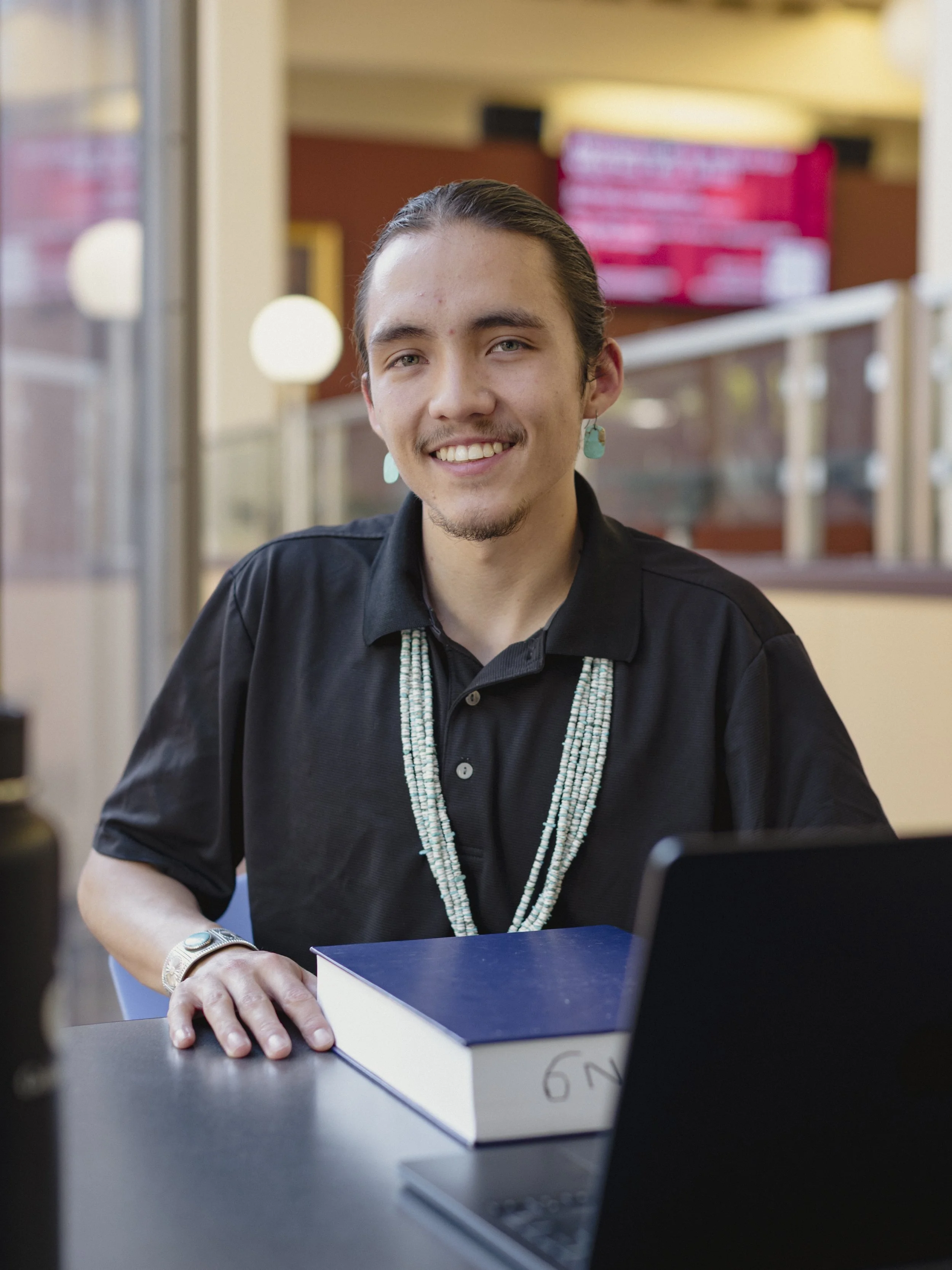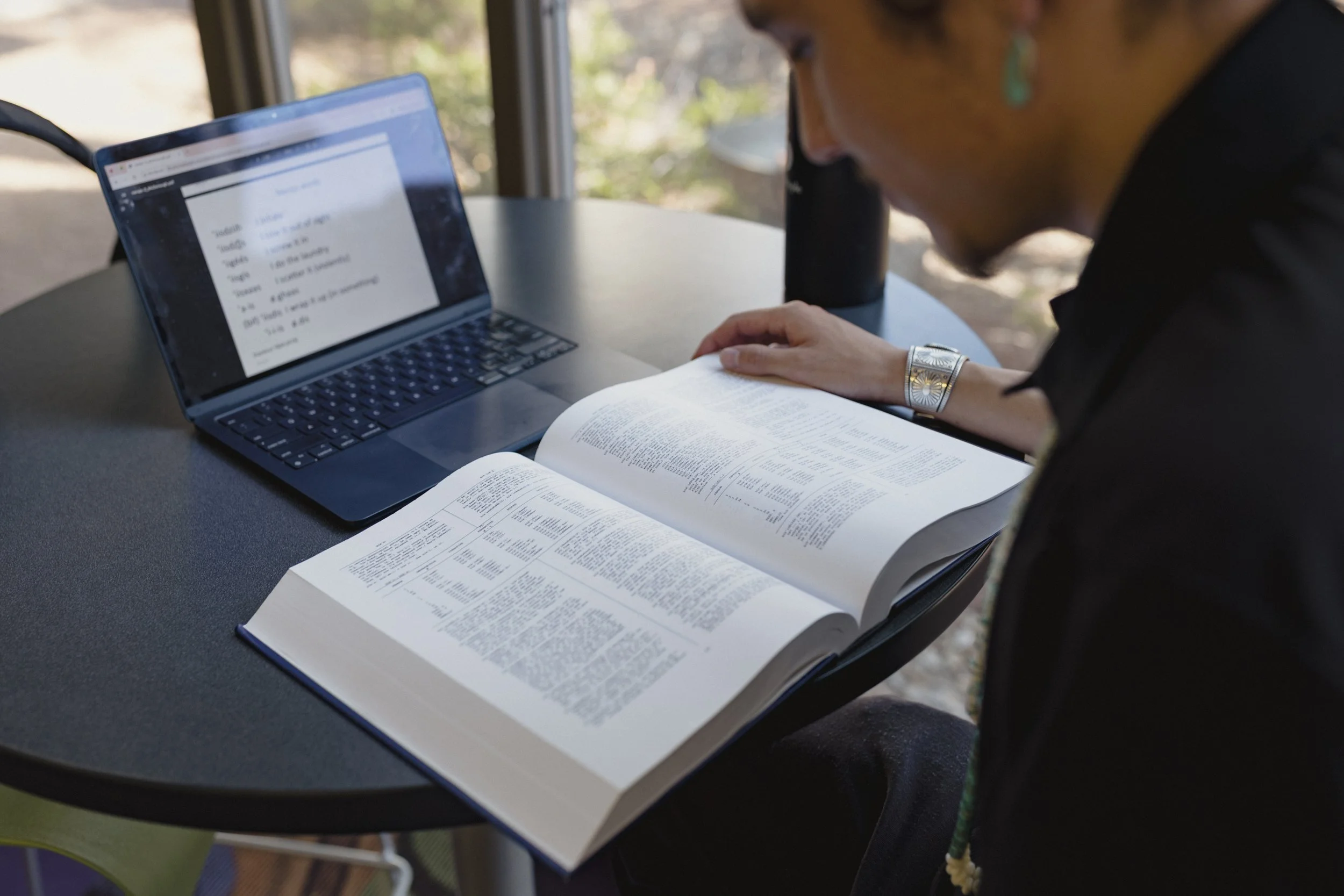Passing the Torch: Navajo Language and the Next Generation of Native Teachers
Devin Lansing didn’t know what to expect from his Navajo language class in ninth grade. He had grown up hearing and speaking the language a little with his grandfather, and his decision to enroll at Navajo Preparatory High School meant that he was required to take it, but he wasn’t necessarily expecting much until he began forming a relationship with his teacher, Kevin Belin—a young Navajo man who spoke the language fluently and brought it to life in the classroom.
“He changed the trajectory of my life,” explains Lansing. “I almost went and joined the military, but with his guidance and knowledge, I realized that my life would be a lot more productive as a teacher. Not only for myself, but for my community and the next generation.”
Lansing grew up in a small Navajo community called Coyote Canyon, about 20 miles north of Gallup, N.M.. Raised by his grandparents, he learned early on how to take care of himself and carry responsibility. But, out of all of his family members, only his grandfather spoke fluent Navajo.
Navajo is the most widely spoken Native American language, but the use of all Native American languages is on the decline. Despite ongoing revitalization efforts, the number of speakers of Native American languages in general has declined by 6% in the past eight years, down from 364,331 speakers during 2009-2013 to 342,311 from 2017-2021. Plus, in Lansing’s experience, fluent Navajo speakers were usually elders.
“That's what made Mr. Belin kind of cool to me,” says Lansing. “I thought: this guy is not my grandpa.”
Turning Education into Action
Lansing began staying after class to ask Belin questions—not just about the Navajo language, but also about stories and spirituality, “things you don’t typically talk about in a classroom,” he says. Their bond over Navajo language and culture deepened, and Lansing eventually became Belin’s teaching assistant.
“He told me: ‘You can’t just learn these things in the classroom, you have to go and do it,’” he recalls.
Eventually, Lansing applied to the Golden Apple Scholars Program in New Mexico at Belin’s urging.
Golden Apple’s Scholars Program equips future teachers with mentorship, teacher preparation courses, financial support, and culturally relevant educational experiences. The program seeks to address the teacher shortage and make a lasting impact on education in New Mexico by fostering community and long term commitment among future teachers, which also improves student outcomes across the state.
Lansing is in his junior year at the University of New Mexico (UNM) this fall, where he’s majoring in Special Education. Special Education appealed to Lansing because he’s not just learning how to accommodate students with disabilities — though that part is important. The degree program also involves learning cultural competency.
“You get to teach students who have a diverse background, which includes Native American students,” explains Lansing, whose ultimate goal is to go back to the Gallup area, to Crown Point, to teach other Navajo students.
That representation matters. While 12% of New Mexico students identify as Native American, only about 3% of the state’s teachers do. Research shows that academic performance, graduation rates, and social-emotional outcomes improve when teachers share cultural backgrounds with their students.
Returning Home to Mentor Others
At UNM, Lansing has continued to learn Navajo and is working for the Navajo Language Program, where he helps design curriculum and develop course structures. Incorporating native-language education into schools has significant benefits. Research shows that Native students who study their own languages achieve academically at higher rates, have higher self-esteem, and exhibit better classroom behavior and engagement.
This is partly why Lansing is looking forward to getting certified and then going back to his community to teach Navajo to high school students.
“There are students who really want to learn, and they deserve to have someone who wants to teach them and who wants that connection,” he explains.
Lansing’s next step is going to Navajo Technical University for a master’s degree. He says Golden Apple has helped him build community and has supported him along the way. One day he hopes to be able to contribute to that community himself.
The Golden Apple Scholars Program in New Mexico is working hard to encourage New Mexicans not just to go into teaching, but to teach in their home communities, ensuring students see themselves and their cultures reflected in their educators. With role models like Lansing, the hope is that more students can find connection, inspiration, and success in school and beyond.





